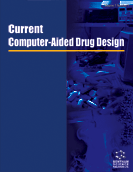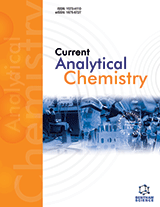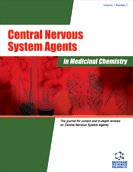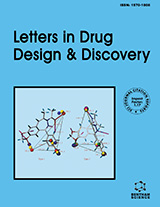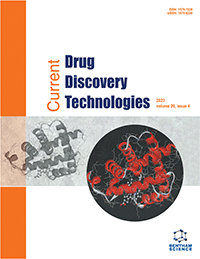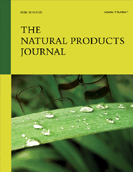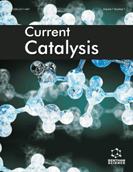Abstract
Background: Indolizines represent a class of heteroaromatic compounds, of pharmacological importance, containing two condensed 5- and 6-memebered rings bridged by a nitrogen atom. Despite indolizine is an important medicinal moiety, a detailed view on the mechanism of action of biologically active indolizines is unavailable.
Objective: The study of ligand–enzyme affinity is of high interest; description of characteristics (energetic and geometric ones) of ligand binding to the active sites of an enzyme could be useful in understanding the action mechanism of a given ligand on the concerned enzyme. Method: After conducting a QSAR study, to predict IC50 (on 15-LO protein from soybeans) of indolizine derivatives and a docking study of indolizines on Beta lactamase and Nicotinamide phosphoribosyltransferase proteins [1], a molecular dynamics analysis was performed on one of the indolizine derivatives, complexed to the above proteins. Results: The performed molecular dynamics study led to the identification of interactions responsible for the stabilization of complexes of the chosen ligand (i.e., indolizine derivative) with the considered enzymes and the specificity of the ligand interaction as well. The structural data and enthalpy values clearly indicate the differences in the behavior of ligand at the active sites of the three investigated enzymes. Among the studied proteins, the hydrophobicity of the active site of Nicotinamide phosphoribosyltransferase seems to be the main factor in promoting the interaction enzyme-ligand, much more manifested in this case, in comparison to the other two proteins Beta lactamase and Nicotinamide phosphoribosyltransferase Conclusion: The present paper discusses a possible mechanism of interaction of an indolizine derivative with three enzyme proteins, providing information for future work in this topic.Keywords: Beta lactamase, binding energy, indolizines, molecular docking, molecular dynamics, nicotinamide phosphoribosyltransferases.
Graphical Abstract
Current Computer-Aided Drug Design
Title:Understanding the Action of Indolizines as Biologically Active Moieties: A Molecular Dynamics Study
Volume: 13 Issue: 1
Author(s): Beata Szefler, Przemyslaw Czelen and Mircea V. Diudea
Affiliation:
Keywords: Beta lactamase, binding energy, indolizines, molecular docking, molecular dynamics, nicotinamide phosphoribosyltransferases.
Abstract: Background: Indolizines represent a class of heteroaromatic compounds, of pharmacological importance, containing two condensed 5- and 6-memebered rings bridged by a nitrogen atom. Despite indolizine is an important medicinal moiety, a detailed view on the mechanism of action of biologically active indolizines is unavailable.
Objective: The study of ligand–enzyme affinity is of high interest; description of characteristics (energetic and geometric ones) of ligand binding to the active sites of an enzyme could be useful in understanding the action mechanism of a given ligand on the concerned enzyme. Method: After conducting a QSAR study, to predict IC50 (on 15-LO protein from soybeans) of indolizine derivatives and a docking study of indolizines on Beta lactamase and Nicotinamide phosphoribosyltransferase proteins [1], a molecular dynamics analysis was performed on one of the indolizine derivatives, complexed to the above proteins. Results: The performed molecular dynamics study led to the identification of interactions responsible for the stabilization of complexes of the chosen ligand (i.e., indolizine derivative) with the considered enzymes and the specificity of the ligand interaction as well. The structural data and enthalpy values clearly indicate the differences in the behavior of ligand at the active sites of the three investigated enzymes. Among the studied proteins, the hydrophobicity of the active site of Nicotinamide phosphoribosyltransferase seems to be the main factor in promoting the interaction enzyme-ligand, much more manifested in this case, in comparison to the other two proteins Beta lactamase and Nicotinamide phosphoribosyltransferase Conclusion: The present paper discusses a possible mechanism of interaction of an indolizine derivative with three enzyme proteins, providing information for future work in this topic.Export Options
About this article
Cite this article as:
Szefler Beata, Czelen Przemyslaw and Diudea V. Mircea, Understanding the Action of Indolizines as Biologically Active Moieties: A Molecular Dynamics Study, Current Computer-Aided Drug Design 2017; 13 (1) . https://dx.doi.org/10.2174/1573409912666161004160827
| DOI https://dx.doi.org/10.2174/1573409912666161004160827 |
Print ISSN 1573-4099 |
| Publisher Name Bentham Science Publisher |
Online ISSN 1875-6697 |
 34
34 3
3
- Author Guidelines
- Bentham Author Support Services (BASS)
- Graphical Abstracts
- Fabricating and Stating False Information
- Research Misconduct
- Post Publication Discussions and Corrections
- Publishing Ethics and Rectitude
- Increase Visibility of Your Article
- Archiving Policies
- Peer Review Workflow
- Order Your Article Before Print
- Promote Your Article
- Manuscript Transfer Facility
- Editorial Policies
- Allegations from Whistleblowers
Related Articles
-
Anticancer Activity of Natural Flavonoids: Inhibition of HIF-1α Signaling Pathway
Current Organic Chemistry Methods of Preparation of Multifunctional Microbubbles and their In Vitro / In Vivo Assessment of Stability, Functional and Structural Properties
Current Pharmaceutical Design STAT3: A Molecular Target for Cancer Whose Time Has Come
Current Signal Transduction Therapy Exploring Confluence-Related Signalling to Modulate the Expression of Oct4 – A Role in Facilitating Mouse Somatic Cell Reprogramming?
Current Stem Cell Research & Therapy Ceramide in Chemotherapy of Tumors
Recent Patents on Anti-Cancer Drug Discovery Targeting Upstream Kinases of STAT3 in Human Medulloblastoma Cells
Current Cancer Drug Targets Editorial (Metastases Prevention is the Cure)
Current Cancer Therapy Reviews The Role of Heat Shock Protein -90 (HSP-90) in Inflammatory Disorders
Current Chemical Biology The Use of Small Peptides in the Diagnosis and Treatment of Hepatocellular Carcinoma
Protein & Peptide Letters Extrapituitary Actions of GnRH Antagonists: Prospects for in vitro Fertilization Programs
Current Pharmaceutical Design Food Applications for Flaxseed and its Components: Products and Processing
Recent Patents on Food, Nutrition & Agriculture Gene Regulation in Cancer Gene Therapy Strategies
Current Medicinal Chemistry Osteoimmunology and Beyond
Current Medicinal Chemistry 3,5-Bis(trifluoromethyl) Phenylammonium triflate(BFPAT) as a Novel Organocatalyst for the Efficient Synthesis of 2,3-dihydroquinazolin-4(1H)-one Derivatives
Current Organic Synthesis The Gamma Catenin/CBP Complex Maintains Survivin Transcription in β-catenin Deficient/Depleted Cancer Cells
Current Cancer Drug Targets Antibody Treatments of Inflammatory Arthritis
Current Medicinal Chemistry Decreased Parathyroid Hormone Levels Despite Persistent Hypocalcemia in Patients with Kidney Failure Recovering from Septic Shock
Endocrine, Metabolic & Immune Disorders - Drug Targets Dietary Prevention of Cancer: Anticancer and Antiangiogenic Properties of Green Tea Polyphenols
Medicinal Chemistry Reviews - Online (Discontinued) Critical Questions for Preclinical Trials on Safety and Efficacy of Vascular Endothelial Growth Factor-Based Therapeutic Angiogenesis for Ischemic Stroke
CNS & Neurological Disorders - Drug Targets Recent Progress and Related Patents on the Applications of Bone Marrow-Derived Stem/Progenitor Cells in Regenerative Medicine and Cancer Therapies
Recent Patents on Regenerative Medicine


